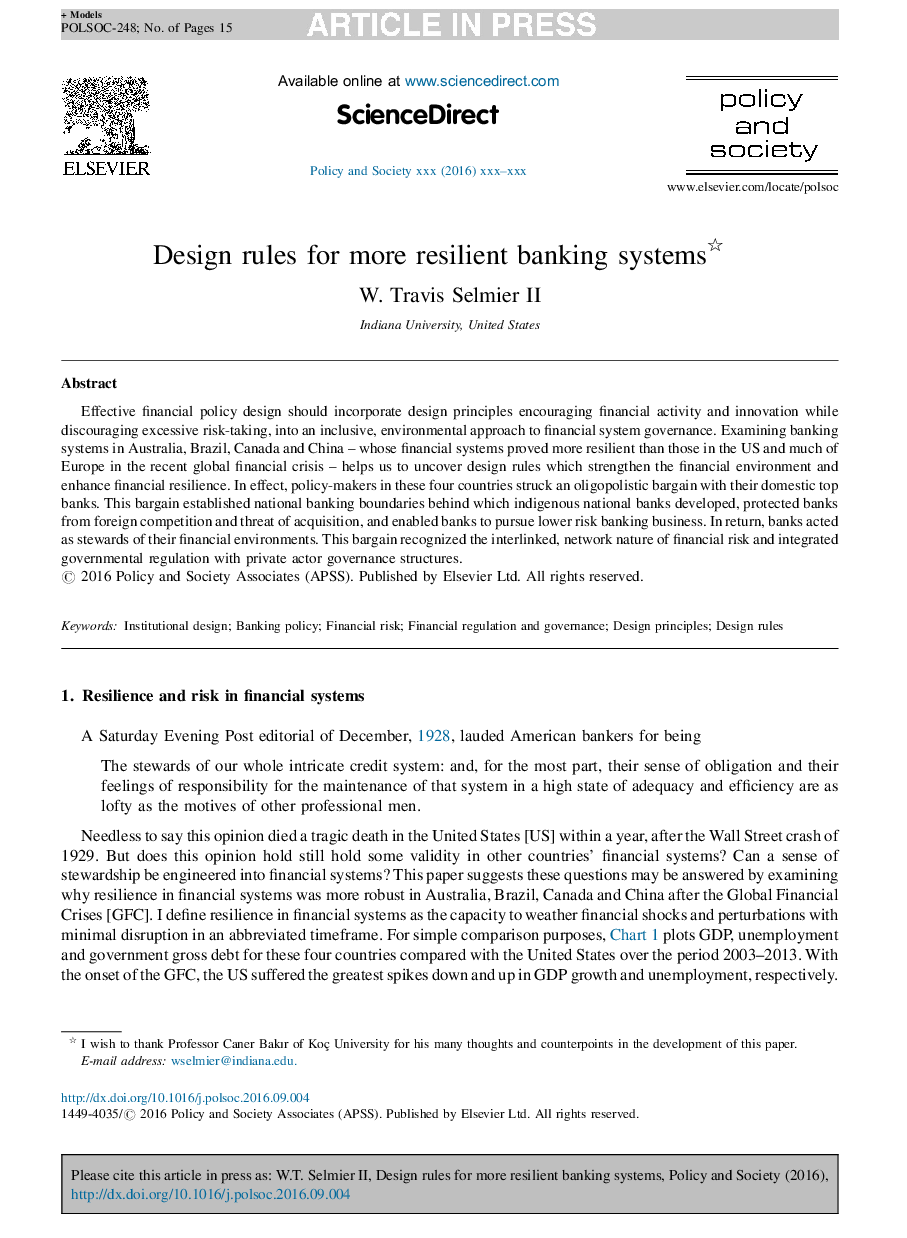| Article ID | Journal | Published Year | Pages | File Type |
|---|---|---|---|---|
| 5118389 | Policy and Society | 2016 | 15 Pages |
Abstract
Effective financial policy design should incorporate design principles encouraging financial activity and innovation while discouraging excessive risk-taking, into an inclusive, environmental approach to financial system governance. Examining banking systems in Australia, Brazil, Canada and China - whose financial systems proved more resilient than those in the US and much of Europe in the recent global financial crisis - helps us to uncover design rules which strengthen the financial environment and enhance financial resilience. In effect, policy-makers in these four countries struck an oligopolistic bargain with their domestic top banks. This bargain established national banking boundaries behind which indigenous national banks developed, protected banks from foreign competition and threat of acquisition, and enabled banks to pursue lower risk banking business. In return, banks acted as stewards of their financial environments. This bargain recognized the interlinked, network nature of financial risk and integrated governmental regulation with private actor governance structures.
Related Topics
Social Sciences and Humanities
Social Sciences
Geography, Planning and Development
Authors
W. Travis II,
